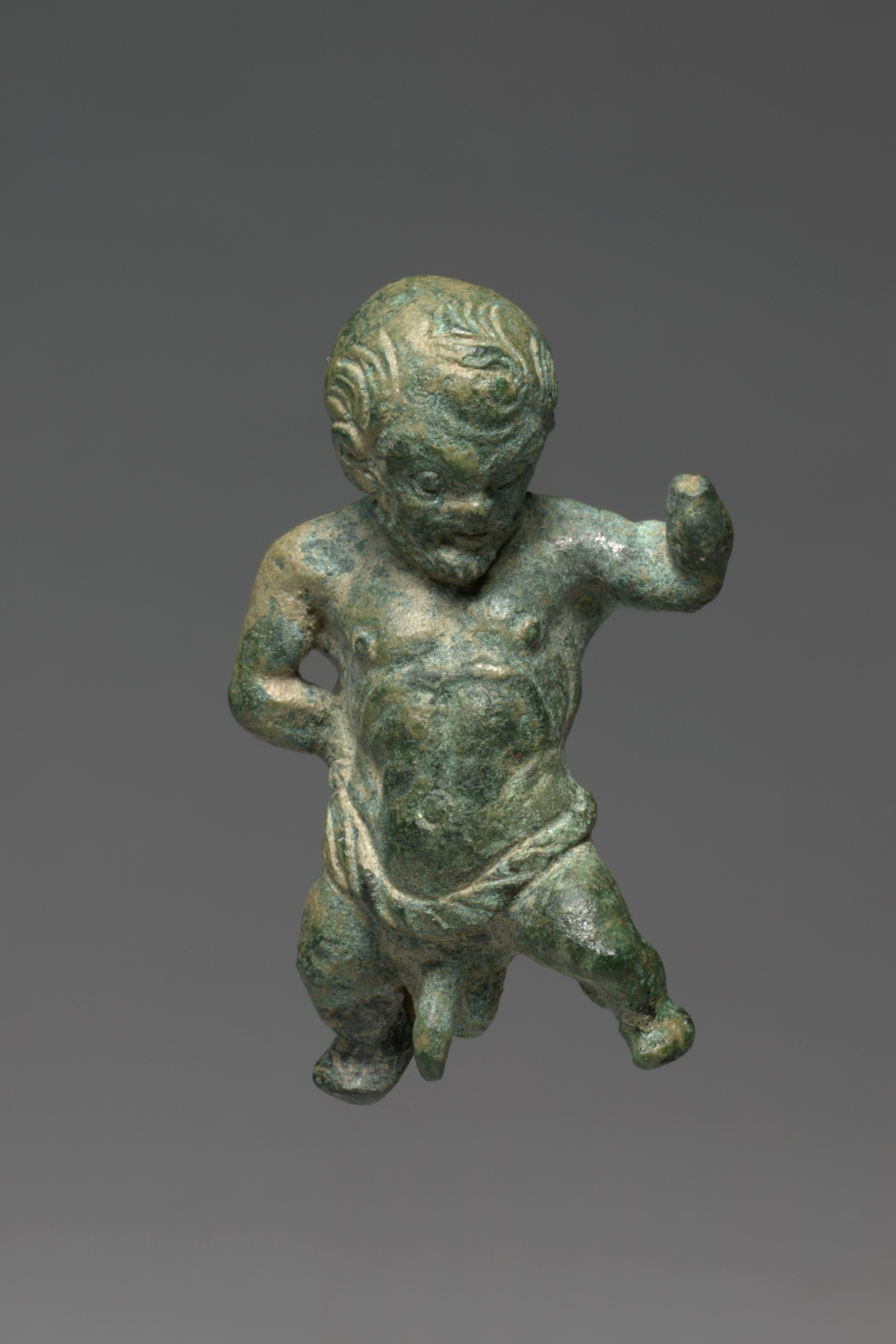The Cleveland Museum of Art
Collection Online as of April 19, 2024

Dancing Dwarf
100 BCE–100 CE
Location: 103 Roman
Did You Know?
People with dwarfism were favorite subjects in Hellenistic art, and then became popular in the Roman Empire.Description
This small, bearded figure wears a twisted sash around his hips and has an exaggerated phallus. He stands with his left arm raised and his right arm on his waist. His left hand is missing but could have once held krotala (ancient clapper-like instruments), as other examples of dancing dwarves hold. People with dwarfism in art are typically rendered with a large head, widely spaced eyes, sharply raised eyebrows, and a depressed nasal bridge, all seen on this figure. This object may have been used as an apotropaic, or protective, amulet to ward off evil.- 1972-The Cleveland Museum of Art, Cleveland OH
- Allentown Art Museum, Gloria Ferrari, and Brunilde Sismondo Ridgway. Aspects of Ancient Greece: An Exhibition Organized by the Allentown Art Museum with the Cooperation of Gloria Ferrari Pinney and Brunilde Sismondo Ridgway ... Allentown Art Museum, September 16 Through December 30, 1979. [Allentown, Pa.]: The Museum, 1979. Pp. 222-3, cat. 108.Lee, Sherman E. “The Year in Review for 1972.” The Bulletin of the Cleveland Museum of Art 60, no. 3 (1973): 63–115. Pp. 67 (ill.), 102, no. 2. www.jstor.org
- Ancient Art of Greece and Rome. Allentown Art Museum, Allentown, PA (organizer) (September 16-December 29, 1979).Allentown Art Museum, September 16-December 29, 1979, "Aspects of Ancient Greece," 223-23.Year in Review: 1972. The Cleveland Museum of Art, Cleveland, OH (organizer) (February 27-March 18, 1973).
- {{cite web|title=Dancing Dwarf|url=false|author=|year=100 BCE–100 CE|access-date=19 April 2024|publisher=Cleveland Museum of Art}}
Source URL:
https://www.clevelandart.org/art/1972.72